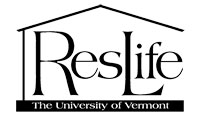 UVM Uses Restorative Practices in Residence Halls Across CampusLast year the University of Vermont (UVM) began using circles and other restorative practices within their department of residential life. In August 2010 IIRP trained all 129 RAs plus other residential life administrative staff to run community circles, to help build community, and also to use restorative practices to respond to incidents in the halls and on campus.
UVM Uses Restorative Practices in Residence Halls Across CampusLast year the University of Vermont (UVM) began using circles and other restorative practices within their department of residential life. In August 2010 IIRP trained all 129 RAs plus other residential life administrative staff to run community circles, to help build community, and also to use restorative practices to respond to incidents in the halls and on campus.
IIRP’s Steve Korr was one of three trainers who delivered this year’s training. “It was a very good training. There was lots of energy, lots of excitement. UVM has a number of very bright people there for whom this really resonated. They very strongly resonated with this whole idea of being real with each other, the whole idea of transparency and having authentic dialog even when it’s not the easy stuff.”
An initial circle is held with first-year students when they arrive at the beginning of the semester. Passing a talking piece around the circle, RA’s ask them to respond to questions like: “What are you hoping for in your first year here?” “What are your concerns?” “What are some of your long-term hopes and dreams?” These simple questions allow students to share as much or as little of themselves as they choose—but provides opportunities for students to become acquainted with each other and with the restorative circles that will be held periodically in their residence halls during the school year.
Stacey Miller, Director of Residential Life at UVM, who made the decision last year to bring restorative practices to campus, said, “The first years take to it like a fish to water."
Restorative practices can also be used to respond to harm. Kathy Cook, Associate Director for Residential Education, commented on how circles can be used to address a wide variety of issues, bringing consistency but also allowing people to adapt to situations on a case by case basis. When something comes up supervisors ask the question, “Which community has been impacted? Who is going to lead this particular circle based on who’s been impacted? How large of a circle is this going to be based on the type of incident? There still are variable details but I feel at least now we have one type of response in restorative practices.”
Restorative practices is not simply for students. Miller said that she suggested her staff use a circle to respond to an incident where a supervisor received an article anonymously in her staff mailbox. The topic of the article was “how to be a better supervisor.” Because no one signed the article, the supervisor didn’t know how to respond and was left with a strange feeling.
The first years take to it like a fish to water."
— Dr. Stacey Miller, Director of Residential Life, UVM
A circle was held with 21 people, the whole team. The supervisor was nervous at first that no one would care about her feelings, but when she actually shared how it felt to receive the article anonymously it was received very well.She felt that her concerns were heard by staff and colleagues. Most of the people said they would also have felt confused and frustrated. People wondered why, if this action was meant to help, why the person who placed the article didn’t want their name be known. The circle concluded with people breaking bread and connecting with each other informally, many of them not having had that chance for a while.
Christina Olstad, an Assistant Director of Residential Life who oversees several residence complexes, said she uses informal affective statements to follow up with students. Early this year a woman resident had a fight with her boyfriend and was screaming outside her room at 1 in the morning. The police had to be called because the woman wouldn’t calm down. Olstad followed up the next day and adopted a personal tone. She said to the woman, “I was really scared for you when I heard you screaming. I thought you were in danger.” She shared her personal concern for the woman and said she was upset that the police had to be called. Olstad noted that what could have ended in an uncomfortable relationship took a positive turn. They reconnected and now the woman smiles at her when they see each other around campus.
For more information about restorative practices at UVM read “Healing After a Student Suicide: Restorative Circles at the University of Vermont.”

